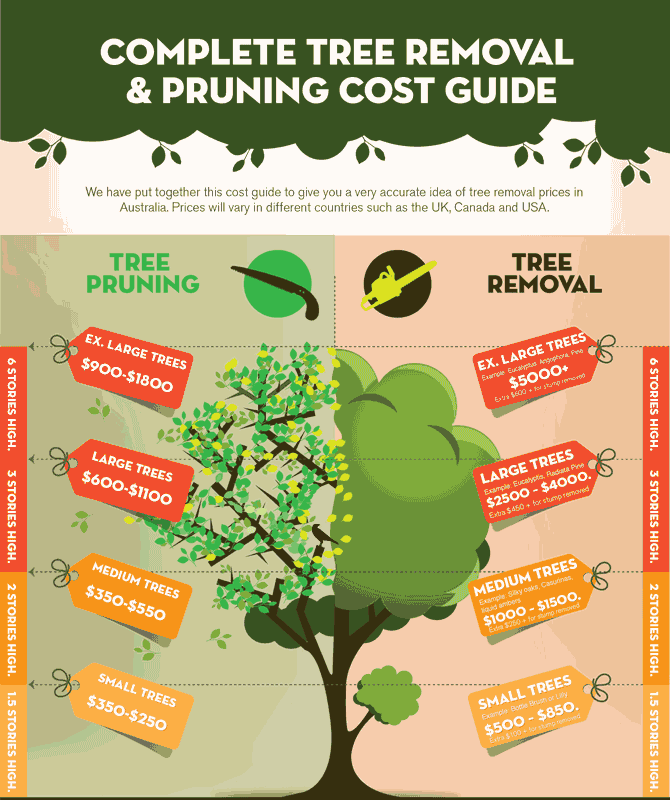Can Trees Be Protected? Indicators For Necessary Tree Elimination
Can Trees Be Protected? Indicators For Necessary Tree Elimination
Blog Article
Web Content Created By-Dale Bright
If you've ever questioned the destiny of the trees on your building, comprehending when it's time for removal is crucial. But just how do you identify if a tree can be saved or if elimination is the only choice? By trying to find certain indicators and evaluating security risks, you can make informed choices that benefit both your landscape and your surroundings. Let's explore the vital elements that enter into play when determining the fate of a tree and exactly how you can ensure the best end result for your environment-friendly companions.
Signs of Tree Decrease
If you notice any of the following indications of tree decline in your backyard, it might be time to take into consideration tree elimination.
One typical sign is dead or decaying branches, which can show underlying problems influencing the tree's wellness. Keep an eye out for stained or shrivelled fallen leaves that continue even with correct care, as this could be an indicator of condition or pests.
An additional warning signal is too much leaning or an obvious shift in the tree's base, which may recommend origin problems or architectural instability. Keep an eye out for fungal development on the trunk or roots, as this can indicate rot and jeopardize the tree's stability.
Additionally, if you observe big fractures in the trunk or major limbs, it's crucial to deal with these problems immediately to prevent possible dangers. Attending to these indications of tree decline quickly can help preserve the security and appearances of your backyard setting.
Security Worries
To ensure the health of your building and those around you, focusing on safety and security issues related to trees is critical. Trees can position numerous security threats otherwise appropriately preserved. Dead or decaying branches may fall all of a sudden, jeopardizing people or damaging structures.
Leaning trees can additionally be harmful, specifically if they're leaning in the direction of a structure or high-voltage line. Additionally, trees with comprehensive origin systems near foundations or below ground energies can trigger substantial damages in time.
It's crucial to consistently inspect your trees for any type of indicators of possible threat. Look out for cracks in the trunk, huge cavities, or signs of illness and decay. If you discover any of these issues, it's finest to seek advice from an expert arborist to assess the circumstance and identify the needed strategy.
Taking https://www.wisfarmer.com/story/news/2019/05/02/edible-landscaping-growing-idea/3612779002/ to address safety worries promptly can avoid crashes and residential property damage in the future. Keep in mind, the safety of your home and those around you need to constantly be the top priority when it pertains to tree upkeep.
Consulting an Arborist
When taking into consideration the health and safety of your trees, consulting an arborist is a crucial action. Arborists are trained experts who concentrate on the care and upkeep of trees. They can evaluate the total health of your trees, recognize any type of concerns such as conditions or structural issues, and give expert recommendations on the very best strategy.
By seeking advice from an arborist, you can receive valuable understandings into the condition of your trees and identify whether removal is essential. Arborists have the expertise and experience to assess the risks connected with maintaining a tree versus removing it. They can also use advice on alternative options, such as trimming, cabling, or bracing, to help preserve the tree whenever possible.
Moreover, arborists can assist you navigate any kind of local laws or permits that might be needed for tree removal. Their knowledge can ensure that the procedure is accomplished securely and in conformity with any applicable regulations.
Conclusion
To conclude, when determining whether trees can be saved or if elimination is needed, it is important to think about indications of decline and security concerns. Consulting an arborist for an extensive evaluation is essential in making the best decision for the tree's health and possible threats. Keep in mind, positive treatment and timely action can aid preserve trees and avoid crashes.
